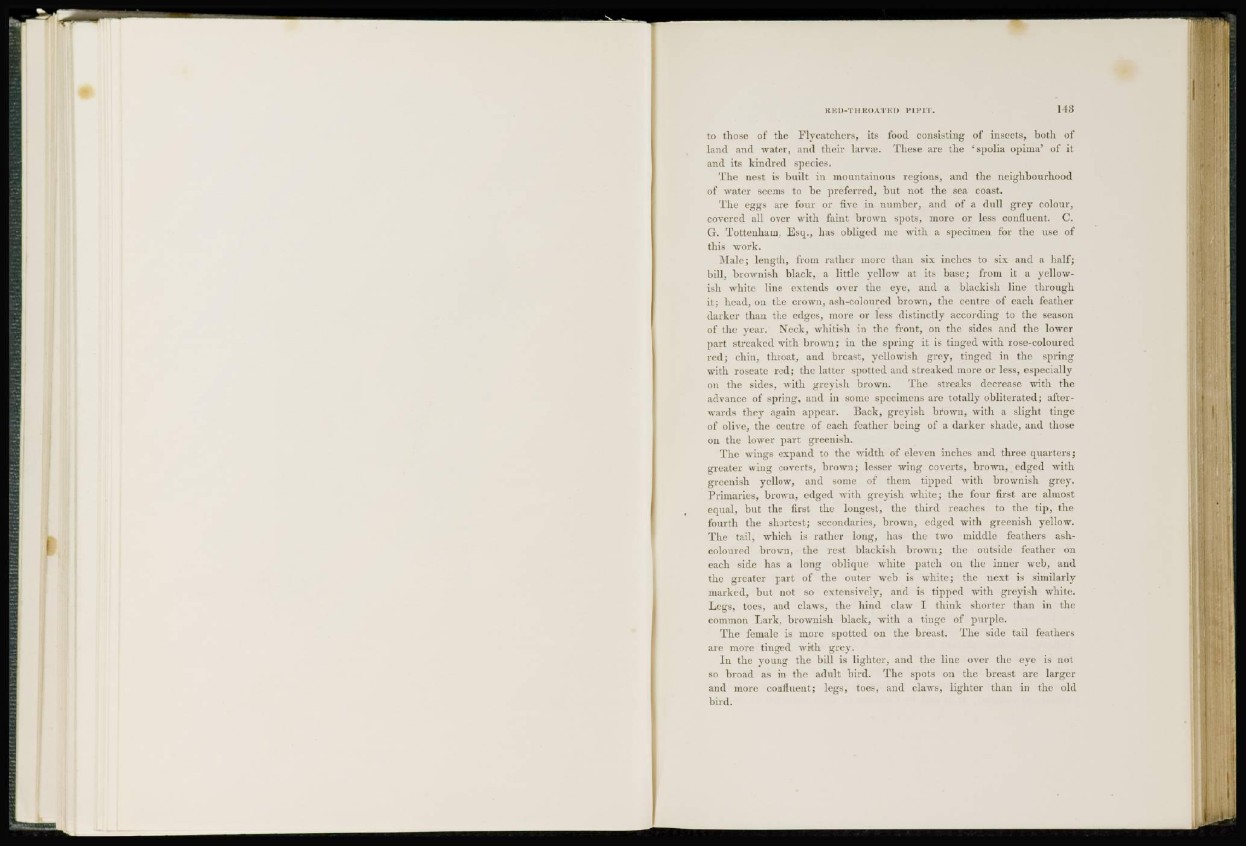
to those of the Flycatchers, its food consisting of insects, both of
land and water, and their larvae. These are the 'spolia opima' of it
and its kindred species.
The nest is built in mountainous regions, and the neighbourhood
of water seems to be preferred, but not the sea coast.
The eggs are four or five in number, and of a dull grey colour,
covered all over with faint brown spots, more or less confluent. C.
G. Tottenham, Esq., has obliged me with a specimen for the use of
this work.
Male; length, from rather more than six inches to six and a half;
bill, brownish black, a little yellow at its base; from it a yellowish
white line extends over the eye, and a blackish line through
it; head, on the crown, ash-coloured brown, the centre of each feather
darker than the edges, more or less distinctly according to the season
of the year. Neck, whitish in the front, on the sides and the lower
part streaked with brown; in the spring it is tinged with rose-coloured
red; chin, throat, and breast, yellowish grey, tinged in the spring
with roseate red; the latter spotted and streaked more or less, esjiccially
on the sides, with greyish brown. The streaks decrease with the
advance of spring, and in some specimens arc totally obliterated; afterwards
they again appear. Back, greyish brown, with a slight tinge
of olive, the centre of each feather being of a darker shade, and those
on the lower part greenish.
The wings expand to the width of eleven inches and three quarters;
greater wing coverts, brown; lesser wing coverts, brown, edged with
greenish yellow, and some of them tipped with brownish grey.
Primaries, brown, edged with greyish white; the four first are almost
equal, but the first the longest, the third reaches to the tip, the
fourth the shortest; secondaries, brown, edged with greenish yellow.
The tail, which is rather long, has the two middle feathers ashcoloured
brown, the rest blackish brown; the outside feather on
each side has a long oblique white patch on the inner web, and
the greater part of the outer web is white; the next is similarly
marked, but not so extensively, and is tipped with greyish white.
Legs, toes, and claws, the hind claw I think shorter than in the
common Lark, brownish black, with a tinge of purple.
The female is more spotted on the breast. The side tail feathers
are more tinged wkh grey.
In the young the bill is lighter, and the line over the eye is not
so broad as in the adult bird. The spots on the breast are larger
and more confluent; legs, toes, and claws, lighter than in the old
bird.